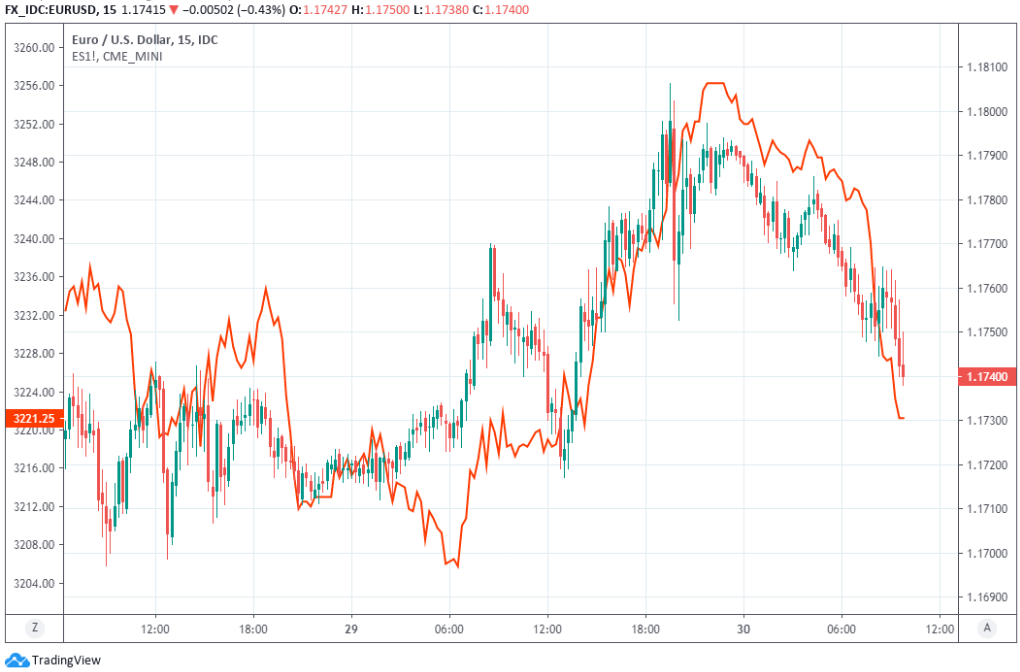Euro in Rare Setback after Germany's Coronavirus Wounds Weigh on Growth Figures
- Written by: James Skinner
-

Commerzbank HQ looms over the Frankfurt skyline. Image © Andre Douque, reproduced under CC licensing conditions
The Euro was in retreat from the Dollar Thursday after Germany's Destatis revealed a larger-than-expected second-quarter economic contraction amid deepening losses in European stock markets.
Europe's unified unit was already on its back foot after investors appeared to take profits on weeks-long bearish wagers against the Dollar although losses gathered pace in mid-morning trading after Destatis declared a -10.1% contraction for last quarter, exceeding the consensus for a -9% fall.
Germany's economy suffered its worst quarter on record alongside many others, although its first-quarter fall was revised from the initial -2.2% to a lesser -2% and the scale of the latest decline is thought to be smaller than those seen in other advanced economies.
"Today’s GDP data marks the trough of the crisis. As with any horrible ride, there is a strong feeling of relief that the worst is over. Compared with the last few months, the coming weeks could actually feel like a joy ride. However, this crisis will have longer-term implications and potentially some surprises up its sleeve," says Carsten Brzeski, chief economist for the Eurozone at ING.
Above: Euro-to-Dollar rate shown at 15-minute intervals alongside S&P 500 index futures (orange line).
Household consumption slumped alongside imports last quarter while capital formation in machinery and equipment nosedived amid a collapse in exports, with general government expenditure having been the sole bright spot but one which was wholly inadequate for offsetting the destruction elsewhere.
"Destatis has published a flash estimate 30 days after the end of a quarter. Previously it did so only 45 days after. Destatis may thus have to revise its first estimate more than in the past – as it pointed out itself," says Florian Hense, an economist at Berenberg. "We see a good chance that Destatis eventually upgrades its estimate to closer to our or consensus’ slightly less negative calls (Berenberg: -8.5% and consensus -9%) going forward. The Q2 reading creates some downside risk to our 2020 full year call of -6%."
Europe's largest economy cratered as the world wallowed in government mandated 'lockdown' as part of an effort to contain the coronavirus, although based on a combination of official figures released to date and economist estimates, it at least appears to have suffered less than most. The UK economy is thought to have contracted at double the rate of Germany's while nearby neighbours like Italy, France and Spain are also all thought to have been dealt a heavier blow by the pneumonia-inducing disease.
Bureau of Economic Analysis data is expected to reveal a -35% fall in U.S. GDP at 13:30 on Thursday.
"We see a strong case for structural Dollar weakness over the coming years given a likely slowdown in fixed income portfolio inflows, an improving global economic outlook and attempts by sovereigns to diversify their reserve assets away from the Dollar," says Allison Nathan, a senior global macro research strategist at Goldman Sachs. "As for Europe, we continue to expect a period of outperformance compared to other regions, and especially the US, given effective virus control, strong recent data and a favorable policy backdrop."
Above: Euro-to-Dollar rate shown at daily intervals alongside S&P 500 index futures (orange line).
"A double-digit percentage decline in the German economy and abysmal results from Lloyds have put the cat among the pigeons this morning. Stocks are firmly in the red,," says Chris Beuchamp, chief market analyst at IG. "Indications of a rise in virus cases throughout Europe have added to the caution."
Germany's data and concurrent Euro declines came amid broad and deepening losses for stock markets in Europe and U.S. equity futures, as American lawmakers risked pulling a fiscal rug out from underneath households' feet while European capitals grew more concerned about a possible second wave of infections on the old continent.
"We remain of the view that the USD's short-run fundamentals have deteriorated by more than the EUR's have improved," says Stephen Gallo, European head of FX strategy at BMO Capital Markets. "In view of the shift in USD fundamentals, stepping in and selling the pair now requires a lot of bravery though, since there aren't that many avenues that USD depreciation can flow through for the time being (i.e. one of the reasons gold and silver have done some heavy lifting)."
Hopes of a European and global economic recovery had been mounting through July as economies progressed through the various stages of reopening and some indicators like IHS Markit purchasing managers' indices returned to levels consistent with a return to growth. But Germany and the UK followed others in tightening restrictions for travellers returning from Spain at the weekend and since then Europe's largest economy has also seen rising infections that have stoked unease in other capitals.
"There seems to be some positioning adjustments post Fed, including profit taking in risk markets and short covering on the USD. The correlation between stocks and the USD is still reliably negative," says Sarah Ying, a strategist at CIBC Capital Markets. "We are still watching major pivot levels, most notably the September 2018 level in EUR/USD at 1.1803. In order for USD weakness to continue, that level will need to be breached."
Above: Euro-to-Dollar rate shown at weekly intervals with Dollar Index (orange line) on left axis.

